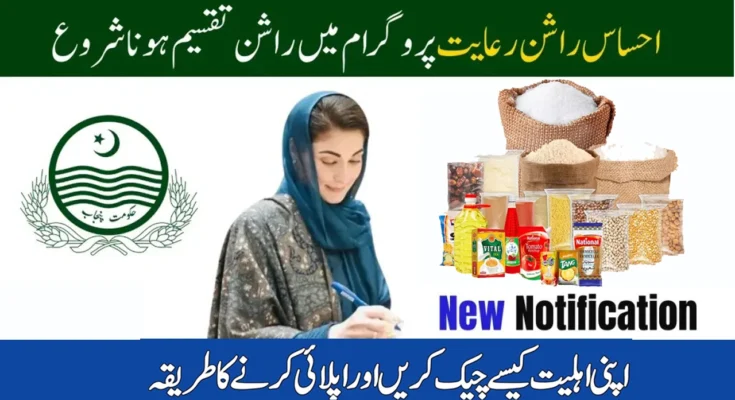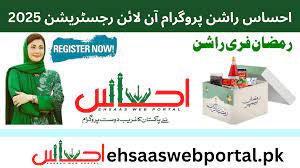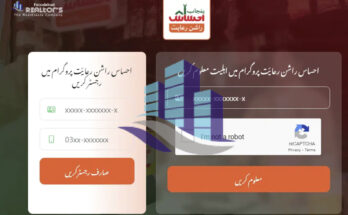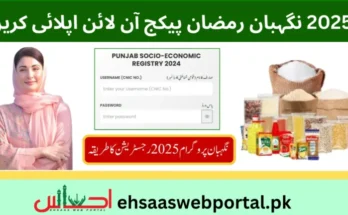Ehsaas Kafalat Program, a cornerstone of Pakistan’s social welfare initiatives, stands as a beacon of hope for millions of underprivileged families. Launched under the broader Ehsaas Programme in 2019 by the Government of Pakistan, this program aims to alleviate poverty, empower women, and foster financial inclusion among the most vulnerable segments of society. By providing direct cash transfers, the Ehsaas Kafalat Program addresses immediate financial needs while promoting long-term economic stability. This article explores the program’s objectives, eligibility criteria, impact, and its role in transforming lives across Pakistan.
What is the Ehsaas Kafalat Program?
The Ehsaas Kafalat Program is a flagship initiative under the Ehsaas Programme, which translates to “compassion” in Urdu. Introduced by former Prime Minister Imran Khan, it reflects the government’s commitment to creating a welfare state as envisioned in the Constitution of Pakistan. The program provides financial assistance to low-income families, particularly women, through quarterly cash stipends. Initially offering PKR 12,000, the stipend was increased to PKR 14,000 under Prime Minister Shahbaz Sharif to address rising inflation and economic challenges.
The program targets marginalized groups, including widows, orphans, persons with disabilities, and transgender individuals, ensuring aid reaches those who need it most. By leveraging technology, such as biometric verification and the National Socio-Economic Registry (NSER), the program ensures transparent and merit-based distribution of funds. With over 7 million beneficiaries, primarily women, the Ehsaas Kafalat Program is one of the largest social protection initiatives in Pakistan.
Key Objectives of the Ehsaas Kafalat Program
- Poverty Alleviation: The program aims to reduce poverty by providing financial support to families living below the poverty line, enabling them to meet basic needs like food, healthcare, and education.
- Women’s Empowerment: By directing cash transfers to female heads of households, the program enhances women’s decision-making power and financial independence.
- Financial Inclusion: Beneficiaries are encouraged to open bank accounts, promoting access to formal financial services and fostering economic integration.
- Transparency and Efficiency: Utilizing digital tools, including SMS-based eligibility checks and biometric ATMs, ensures funds are disbursed transparently and efficiently.
- Social Equity: The program prioritizes vulnerable groups, addressing systemic inequalities and uplifting marginalized communities.
How Does the Ehsaas Kafalat Program Work?
The Ehsaas Kafalat Program operates through a streamlined process designed to identify and support eligible beneficiaries. Here’s a step-by-step breakdown:
1. Eligibility Check
To ensure aid reaches those in genuine need, the program uses strict eligibility criteria:
- Income Threshold: Families must have a monthly income below the poverty line.
- Female Beneficiaries: Preference is given to female heads of households, particularly widows or women with no income source.
- Vulnerable Groups: The program includes orphans, persons with disabilities, and transgender individuals.
- CNIC Requirement: Applicants must have a valid Computerized National Identity Card (CNIC) issued by NADRA.
Individuals can check their eligibility by sending their CNIC number via SMS to 8171 or visiting the official Ehsaas web portal (8171.bisp.gov.pk). The NSER, a comprehensive database, is used to verify socioeconomic status.
2. Registration Process
Once eligibility is confirmed, applicants can register through:
- Online Portal: The Ehsaas web portal allows users to submit their details, including CNIC and contact information.
- Ehsaas Centers: Over 533 registration centers across Pakistan facilitate in-person applications.
- NSER Survey: A door-to-door survey by the National Socio-Economic Registry team assesses household poverty levels.
3. Biometric Verification
To prevent fraud, the program employs biometric verification for cash disbursement. Beneficiaries can withdraw funds from designated ATMs, such as those operated by Habib Bank Limited (HBL) or Bank Alfalah, or through POS centers in their districts.
4. Cash Disbursement
Eligible families receive PKR 14,000 quarterly, deposited directly into their bank accounts or disbursed via biometric ATMs. This financial aid helps cover essential expenses, reducing the burden of poverty.
Impact of the Ehsaas Kafalat Program
The Ehsaas Kafalat Program has made significant strides in transforming lives across Pakistan. Its impact can be seen in several key areas:
1. Empowering Women
With a focus on women as primary beneficiaries, the program has empowered over 7 million women by providing them with financial resources. Studies show that cash transfers to women lead to better household outcomes, as they prioritize spending on food, education, and healthcare. The program’s “one woman, one bank account” policy has also promoted financial literacy and inclusion among women, enabling them to participate in economic activities.
2. Poverty Reduction
The World Bank has praised the Ehsaas Programme, including the Kafalat initiative, for its extensive reach. In 2021, the program expanded its coverage from 7 million to 10 million beneficiaries, ranking among the top global social protection measures. By providing regular cash stipends, it has helped families meet basic needs, reducing multidimensional poverty, which affects 38.8% of Pakistan’s population.
3. Support During Crises
The Ehsaas Kafalat Program, alongside the Ehsaas Emergency Cash Program, played a critical role during the COVID-19 pandemic. It provided immediate relief to millions affected by lockdowns and unemployment, earning recognition from international organizations like the World Bank for its efficiency and coverage.
4. Support for Vulnerable Groups
The program’s inclusive approach ensures that marginalized communities, such as persons with disabilities and transgender individuals, receive targeted support. For instance, eligible individuals with disabilities may receive additional aid, such as wheelchairs, to improve mobility.
5. Economic Empowerment
Beyond immediate financial relief, the program supports long-term economic stability through initiatives like the Ehsaas Interest-Free Loan Scheme and Ehsaas Aamdan Program. These provide assets like sewing machines or livestock, enabling beneficiaries to generate sustainable income.
Challenges and Criticisms
While the Ehsaas Kafalat Program has achieved remarkable success, it faces some challenges:
- Limited Grant Size: Research indicates that while the cash stipend improves household expenditure, it may not be sufficient to lift families out of poverty entirely.
- Accessibility in Rural Areas: Some beneficiaries, particularly in remote regions, face difficulties accessing registration centers or biometric ATMs.
- Awareness Gaps: Many eligible families, especially in rural areas, remain unaware of the program or its application process.
- Verification Delays: Delays in NSER surveys or biometric verification can hinder timely disbursement of funds.
The government is addressing these issues by expanding registration centers, enhancing digital outreach, and improving the NSER survey process to ensure inclusivity and efficiency.
SEO Optimization Strategies for This Article
To ensure this article ranks well on search engines, the following SEO strategies have been implemented:
- Keyword Integration: Primary keywords like “Ehsaas Kafalat Program,” “poverty alleviation in Pakistan,” and “women empowerment” are naturally woven into the content. Secondary keywords, such as “Ehsaas registration,” “8171 SMS,” and “Benazir Income Support Programme,” are included to capture related searches.
- Headings and Subheadings: Clear, descriptive headings (H1, H2, H3) improve readability and help search engines understand the article’s structure.
- Meta Description: A concise meta description summarizing the article’s content and including key phrases like “Ehsaas Kafalat Program” and “financial assistance in Pakistan” will attract clicks.
- Internal and External Links: Links to authoritative sources, such as bisp.gov.pk, and related articles enhance credibility and user engagement.
- Mobile Optimization: The article’s format is mobile-friendly, ensuring accessibility for users on smartphones, a key demographic in Pakistan.
- Alt Text for Images: If images are included, descriptive alt text with keywords will improve accessibility and SEO performance.
How to Apply for the Ehsaas Kafalat Program
For those interested in applying, follow these steps:
- Check Eligibility: Send your CNIC number to 8171 via SMS or visit 8171.bisp.gov.pk.
- Complete Registration: Visit an Ehsaas registration center or use the online portal to submit your details.
- Prepare Documents: Ensure you have a valid CNIC, proof of income, and other required documents.
- Undergo Verification: Complete the NSER survey and biometric verification process.
- Receive Funds: Once approved, collect your quarterly stipend from a designated ATM or POS center.
For additional support, contact the Ehsaas helpline or visit a local Ehsaas center.
Conclusion
The Ehsaas Kafalat Program is more than a financial aid initiative; it is a transformative force that empowers the most vulnerable in Pakistan. By prioritizing women, leveraging technology, and addressing systemic inequalities, the program aligns with the vision of a welfare state. Its impact on poverty reduction, women’s empowerment, and financial inclusion is undeniable, making it a global model for social protection. As Pakistan continues to navigate economic challenges, the Ehsaas Kafalat Program remains a lifeline for millions, proving that compassion and collective action can drive meaningful change.
For more information or to apply, visit the official Ehsaas website at bisp.gov.pk or send your CNIC to 8171. Join the millions who are building a brighter future through this groundbreaking program.



